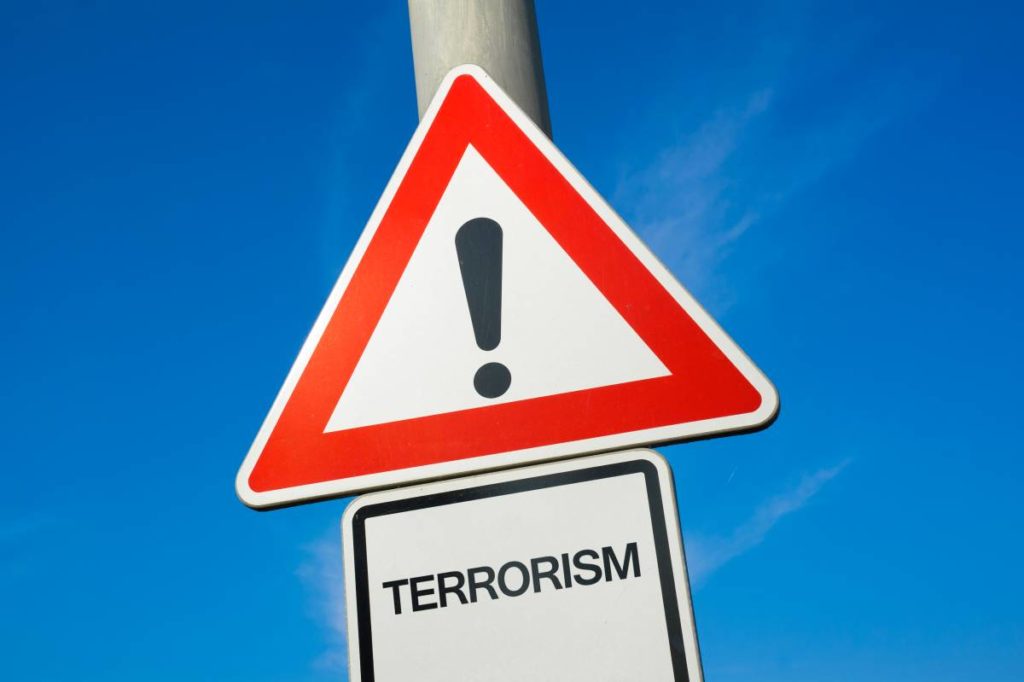- +352 444 222
- Monday-Friday 12:00-18:00
- 20, avenue Marie-Thérèse, 2132 Luxembourg


In France, TRACFIN (financial intelligence unit) and the ACPR (Autorité de Contrôle Prudentiel et de Résolution or, more commonly, the body responsible for supervising and controlling the banking and insurance sector) seem to encourage taxable persons to1)Within the meaning of Article 2 of EU Directive 2015/849 on the prevention of the use of the financial system for the purpose of money laundering or terrorist financing detect weak signals of radicalization. Indeed, in “Trends and analysis 2018-20192)TRACFIN, Trends and analysis of money laundering and terrorist financing risks, 2018-2019, pages 76 and 77 “TRACFIN refers to a practical case in which the warning criteria to be raised by the reporting party in the context of suspected terrorist financing are: a change in physical appearance or payments to community associations. What’s more, in the 2016 document3)TRACFIN, Tendances et analyse des risques de blanchiment de capitaux et de financement du terrorisme, 2016, page 29 already TRACFIN mentions as a warning signal “rapid and/or demonstrative religious conversion” and again the change of physical appearance.
This is why TRACFIN is asking its clients, especially those in direct contact with customers, to spot these signs of radicalization.
The ACPR in a decision of March 22, 20184)ACPR, procedure n°2017-08, hearing of February 22, 2018, pages 6 and 8 establishing a sanction against a credit institution also refers on several occasions to weak signals relating to behavior or dress that “fall within the remit of branch staff”. Or the change in the person’s clothing, which leads us to assume that he has become radicalized.
These examples suggest that account managers, insurers, bankers, lawyers, notaries, real estate agents and chartered accountants are now being asked to spot signs of radicalization in their customers and, if necessary, refer them to TRACFIN.
The question that spontaneously springs to mind is: how can a subject profile a radicalized person? How can an ordinary employee, trained in his job as a banker, insurer, real estate agent, etc., detect signs about an individual he perhaps rarely sees? Then, what are the signs that would make it possible to suspect his radicalization? Are they aware of the risks involved in judging someone they consider to be “radicalized”? Do they really know what a radicalized person is?
“The fight against radicalization is based on the treatment of weak signals”. This title already raises questions which, moreover, are fuelled at source by the series of documents emanating mainly from Tracfin and the ACPR that we mentioned in the preamble.
First, I’ll look at “weak signal processing” and then at the “risks” involved in detection. What is weak signal processing? It indicates that we hold or have collected data, information and signs, i.e. behavioral elements. To illustrate my point, a sign, in our business, is anything that involves humans. Namely, the collection of facial and bodily signs: a smile, a tic, a micro-expression, a gesture, a word, a sound, a way of moving, sitting, reacting to elements, dressing, personal and professional life choices, relationships, etc…. Signs are also collected in the environment of the individual to be profiled: the decoration of a room, an object placed in a certain way, the rhythms of life and geographical movements, etc… Sign detection is a job that involves gathering a great deal of information about a person and his or her environment.
In fact, we collect bodily, written, olfactory, visual, auditory, kinethetic, vocal and behavioral information depending on who we are. In our professions, we have to be as neutral as possible. This means we have to avoid anything resembling a value judgment. It’s one of the fundamentals that needs to be improved on a daily basis in order to achieve better results. Neutrality means disregarding our ideas, our values, our desires, our fears, our own liabilities – ourselves, as it were – as far as possible. We have to rely on the elements we’ve collected, without considering them from the outset. For example, suppose I hate soccer and I need to profile a footballer. I have two solutions: I can disregard the fact that I hate soccer and do the profiling, or on the contrary, I hate soccer so much that I refuse to profile because my results will be biased.
So, if we consider a person who is very tired, stressed, fearful, prejudiced, who has had value judgments imposed on him or her, who suffers, criticizes, imposes, manipulates, is introverted or shy, this person is not neutral. These individuals can’t make heads or tails of the information they receive. In fact, they will treat them according to their own references and profiles. Let’s take the (generic) example of a battered woman who is asked to reveal weak signals of radicalization. In this case, she will either be afraid and reveal nothing of what she has seen, or she will act towards the men to take revenge on the one who beat her. It acts according to its reference and profile.
Knowing the profile of your employees in a professional context will reveal their abilities and enable you to use them wisely, or even detect any behavioral analysts capable of picking up on these signals. Relying solely on technology to detect the human element does not enhance its results and potential. My comments are illustrated by invented profiles, with the caveat that these in no way represent the reality of all profiles that meet the criteria listed. These are generic profiles by way of illustration.
Mrs X works at a bank counter. She loves jazz, goes out with her two best friends from her home village, and brings up her children with a civil servant husband. She loves modern painting and knitting. She was raised in the spirit of giving criminals a chance, helping others and saving the planet from waste.
Opposite the bank where Madame X works is Monsieur Y. Born into a farming family, he lives on the family farm. He deals with insurance disputes all day long. His days are stressful, he is often insulted, he looks after his disabled wife and has little time for himself. He’s a cinephile, conservative-minded, can’t stand change and loves rugby.
So how will Mrs X and Mr Y deal with weak signals?
Madame X will be very tolerant. Even if she sees a few signs of radicalization, she probably won’t report them.
Mr. Y, on the other hand, runs the risk of seeing too many signs of radicalization, even where none exist.
Why is that? Profiles have their own value judgments, and so does every human being. Without realizing it, we all judge. In fact, we can’t or won’t be objective. Hence the need for everyone to work on their neutrality. We’d rather stay in our comfort zones 1 and 2 than question ourselves, reflect, analyze objectively, etc… It’s a question of comfort and ease, which we need to overcome by working on ourselves.
Asking an individual who has not been trained in neutrality and the collection of signs to identify or even judge weak signals of radicalization is bound to lead to a host of errors.
A piece of clothing, an unusual movement of money, a crooked word, do not make individuals “radicalized”. Most radicalized people are far better infiltrated into our society than we imagine. They are very difficult to detect, and can only be detected by behavioral experts such as profilers, people who have been in contact with this kind of profile, often in the military, etc. It should be noted that they are more numerous than those who display their radicalization. Numerous cases have come to light, such as the knife attack on the Paris Prefecture. In this case, although there were certain signs that Mr. Harpon was radicalized, it was he himself who revealed his radicalization through the attack he carried out. He had been working for years at the Paris Prefecture, in the IT department, with access to a great deal of sensitive data. It’s the kind of job that radicalized infiltrators love. Mr. Harpon probably acted on a trigger to commit this act. Triggered by whom or what, that remains to be seen. Not considering women by not shaking their hands, not accepting that they are not veiled, that they work, are indeed signs that can be considered as signs of radicalization. We need to verify this by means of targeted questioning and observation of the individual in an environment that may be favorable, unfavorable or even hostile. Particular attention should be paid to non-verbal behavior, as the body never lies. All it takes is a voice intonation, a grin, a gesture, a silence, even a micro-expression. The body will speak, and it’s up to us to decode this language. Non-verbal communication accounts for 80% of real communication…
Is “combating radicalization” by detecting these signals the job of the subjugated? I doubt it… Let them share questions about things they’ve seen, perhaps. But this needs to be analyzed by experts. Safety and security are real professions that should only be dedicated to people with the right vocations and training. What is even more worrying is what happens to the data collected? In whose hands do they fall? How are they processed? Are they protected in the real and the virtual?
Some people who are unhappy, who want to put things right, who are suffering from malicious acts committed by delinquents or worse, who are unhappy with the law or have a phobia of strangers, will take pleasure in detecting signals at all costs. The risks are significant in terms of their impact on the company, its employees and its customers. Especially when there’s a sharp increase in insecurity-related incidents.
Thus, considering a person to be radicalized or not on the basis of aesthetic criteria, what he or she says, how he or she dresses or how he or she lives is an insufficient criterion, opening the door to major aberrations. This is all the more true for people who are afraid to speak out, who are subject to value judgments, discrimination, lies, deception or revenge. This is undoubtedly both a source of insecurity and a sign of unreliability.
Finally, the real question is: what right does a banker, a real estate agent, or any other subject have to suddenly turn himself into a judge in order to inform his superiors of pseudo signs of radicalization? Then, even if the relevant information is “passed on”, what happens to it? Apart from knowing whether the data is correct? What kind of people are collecting this information, which may well have no impact at all?
The denunciation of other men is a well-known phenomenon in history, from Judas to the Vel d’Hiv roundup, to name but two examples a few centuries apart. The question that naturally springs to mind is whether informing people about signs of radicalization, without a priori having the potential to do so, does not amount to a form of denunciation? If, during the Holocaust, we experienced the denunciation of pseudo-Jews out of simple jealousy, fear or ignorance, we can’t help but draw this frightening parallel with the subject at hand. In recent years, there has been an increasing tendency, judicial or otherwise, to encourage people to denounce their fellow man (taxes, criminal denunciation, driving, etc.). In fact, there’s even a website that lists all the platforms for reporting a crime or misdemeanor5)http://www.delation-gouv.fr/ knowing the number of judicial errors that exist. So it’s easy to wonder whether TRACFIN has taken this logic one step further, and for what purpose and for whom? isn’t he asking for too much? Shouldn’t those subject to the law retain their position as private entities, rather than being encouraged to behave like intelligence agents?
It is possible that the TRACFIN method can be used to detect genuine radicalized profiles. It would be interesting to know the ratio of these profiles to the number of signals collected. While the approach of detecting signs of radicalization is laudable in itself, I can’t approve of an approach that ensures the collection of information by private entities that turn those subject to the law into untrained and unaccredited informers. The data collected will probably be mostly distorted, handed over who knows where, who knows to whom, processed who knows how, protected or not, and if protected, how protected. The resources deployed to detect signals of radicalization should be commensurate with the fight against radicalization, which is not yet the case.
[+]
| ↑1 | Within the meaning of Article 2 of EU Directive 2015/849 on the prevention of the use of the financial system for the purpose of money laundering or terrorist financing |
|---|---|
| ↑2 | TRACFIN, Trends and analysis of money laundering and terrorist financing risks, 2018-2019, pages 76 and 77 |
| ↑3 | TRACFIN, Tendances et analyse des risques de blanchiment de capitaux et de financement du terrorisme, 2016, page 29 |
| ↑4 | ACPR, procedure n°2017-08, hearing of February 22, 2018, pages 6 and 8 |
| ↑5 | http://www.delation-gouv.fr/ |
Dear users, on 15/06/2022 Internet Explorer will be retiring. To avoid any malfunctioning, we invite you to install another browser, such as Google Chrome, by clicking here, or the one of your choice.
Please check this before contacting us in the event of a problem.
